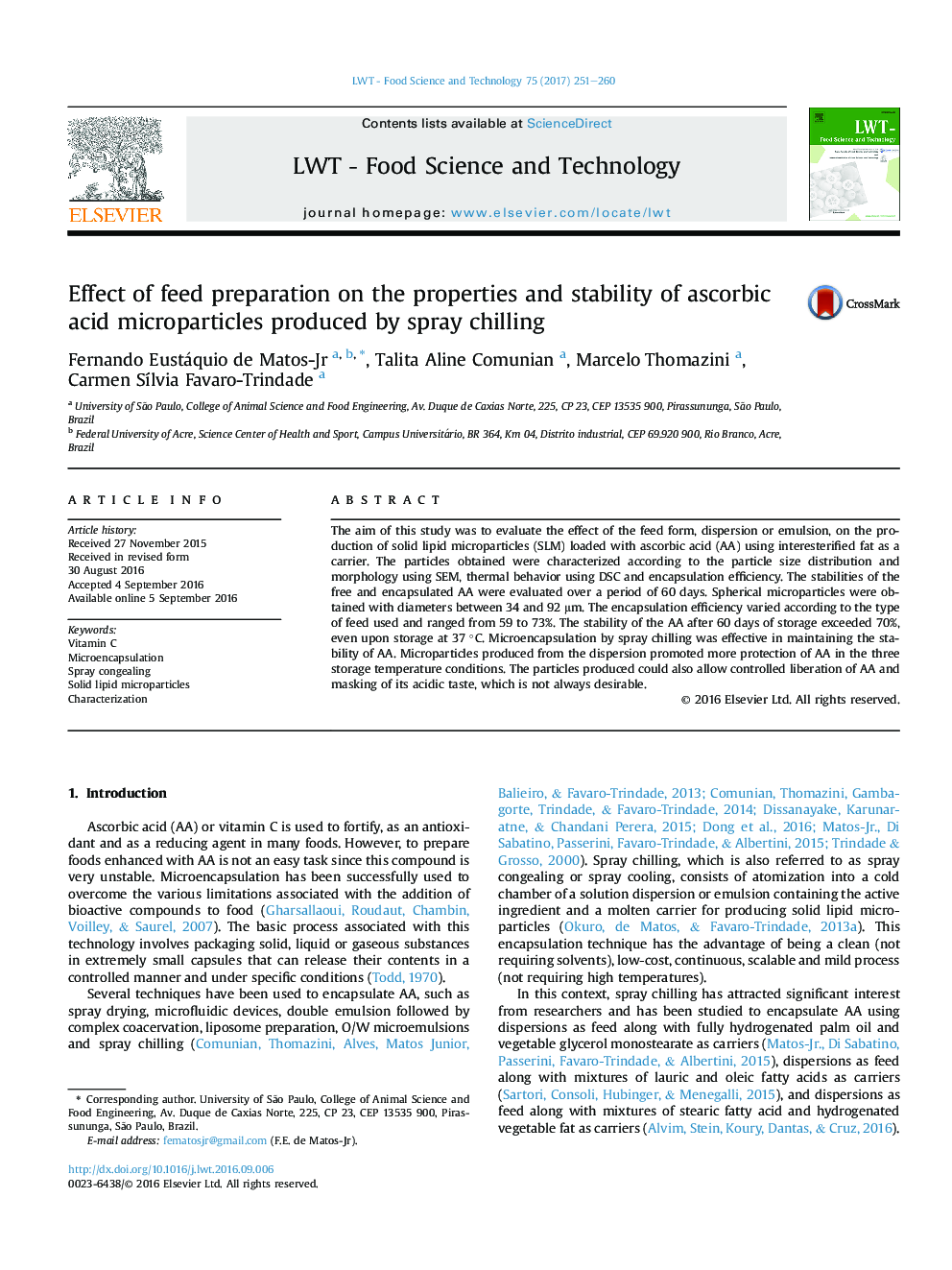| Article ID | Journal | Published Year | Pages | File Type |
|---|---|---|---|---|
| 6400176 | LWT - Food Science and Technology | 2017 | 10 Pages |
Abstract
The aim of this study was to evaluate the effect of the feed form, dispersion or emulsion, on the production of solid lipid microparticles (SLM) loaded with ascorbic acid (AA) using interesterified fat as a carrier. The particles obtained were characterized according to the particle size distribution and morphology using SEM, thermal behavior using DSC and encapsulation efficiency. The stabilities of the free and encapsulated AA were evaluated over a period of 60 days. Spherical microparticles were obtained with diameters between 34 and 92 μm. The encapsulation efficiency varied according to the type of feed used and ranged from 59 to 73%. The stability of the AA after 60 days of storage exceeded 70%, even upon storage at 37 °C. Microencapsulation by spray chilling was effective in maintaining the stability of AA. Microparticles produced from the dispersion promoted more protection of AA in the three storage temperature conditions. The particles produced could also allow controlled liberation of AA and masking of its acidic taste, which is not always desirable.
Related Topics
Life Sciences
Agricultural and Biological Sciences
Food Science
Authors
Fernando Eustáquio de Matos-Jr, Talita Aline Comunian, Marcelo Thomazini, Carmen SÃlvia Favaro-Trindade,
